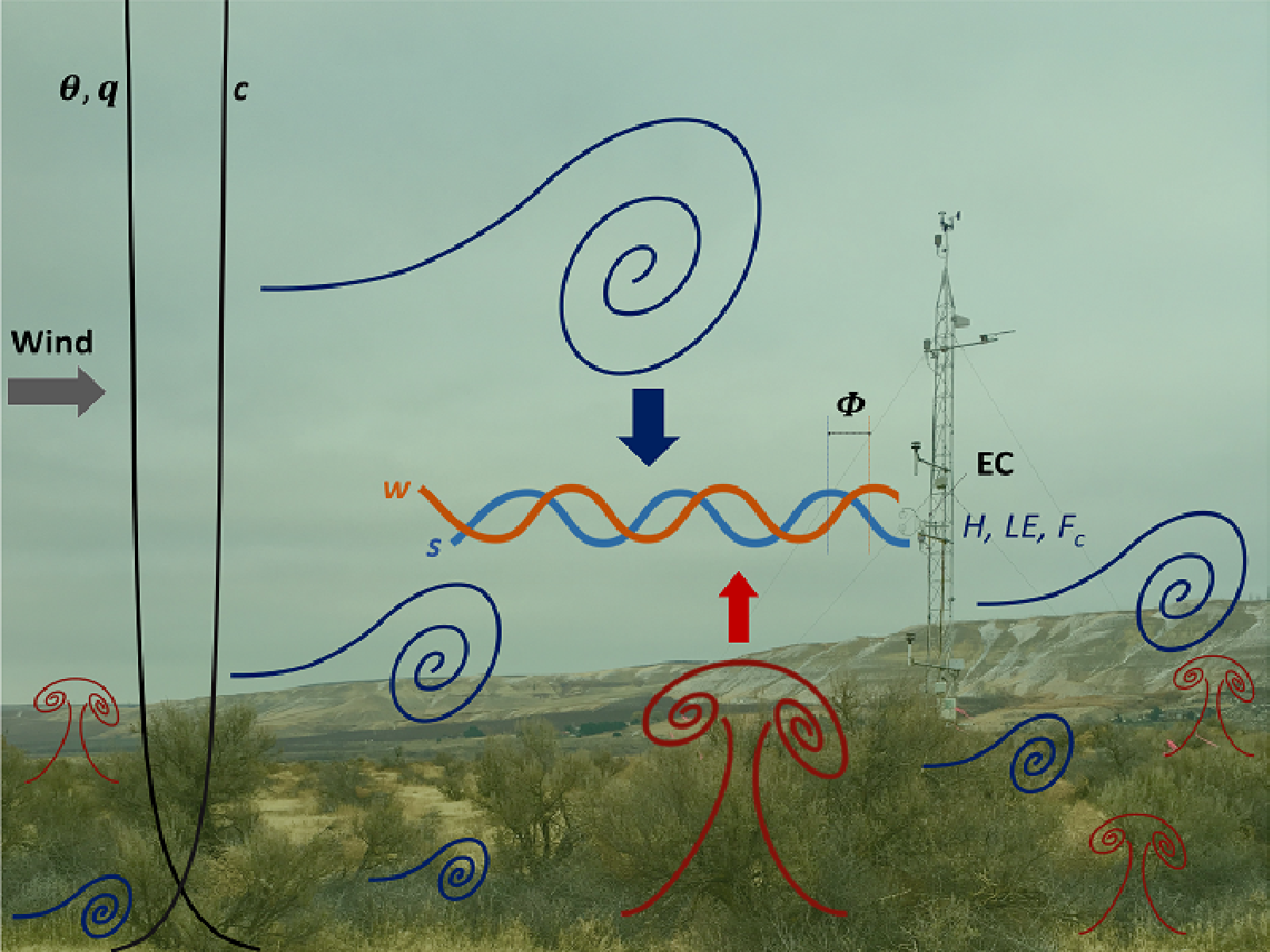Gaps Identified to Improve Accuracy of CO2 Fluxes Measured By Eddy Covariance Systems
Understanding the links between the energy balance non-closure caused by large eddies and CO2 fluxes is critical for interpreting turbulent heat and carbon exchanges.

The Science
Turbulent vertical fluxes of heat, water vapor, and carbon dioxide (CO2) occur constantly between land surfaces and the atmosphere. For decades, measuring such fluxes has relied on eddy covariance (EC), a complex statistical technique. However, most studies using EC fail to balance the available energy of both sensible and latent heat fluxes. This widely-reported gap, known as the non-closure problem of the surface energy balance, is commonly attributed to the influence of large-scale eddies on both kinds of heat fluxes.
A new paper by scientists at Washington State University and Pacific Northwest National Laboratory provides new insights into EC by investigating two under-studied issues: how CO2 fluxes are influenced by large eddies, and the mechanistic links between CO2 fluxes and energy balance non-closure.
The results demonstrate, in part, that reductions in the magnitude of CO2 fluxes associated with large turbulent eddies are mechanistically linked to non-closure of the surface energy budget.
The Impact
The paper improves the understanding of how non-closure of the surface-energy balance impacts measurements of CO2 fluxes. It also provides direct evidence that further studies are needed to investigate how landscape heterogeneity—sagebrush terrain, in the case of this paper—influences CO2 fluxes.
Summary
The new study relies on a dataset collected by an EC eddy covariance flux system in a semi-arid sagebrush ecosystem in the Hanford Area of rural southeastern Washington. The research shows a link between non-closure and reduced CO2 fluxes associated with large turbulent eddies. It attributes that link to the simultaneous influence of low-frequency motions on sensible and latent heat fluxes and on CO2 fluxes.
The researchers used a recently developed approach, ensemble empirical mode decomposition, to extract large eddies from the turbulence time series. Then they analyzed the impacts of amplitude and phase differences on flux contribution.
One challenge in this work was identifying occasional spectral gaps, especially under unstable atmospheric conditions when convective motions tend to overlap the scales between large eddies and small eddies. Based on a previous study of theirs, the authors defined large eddies as the sum of a certain number of oscillatory components that are largely responsible for the run-to-run variations in fluxes. There was no surprise at the non-closure of the surface energy balance and therefore biases in CO2 fluxes. However, the researchers found that the energy balance closure ratio decreased as atmospheric instability increased. The underlying causes of that remain unclear. Work on finding those causes, the authors say, is underway.
The authors, who also include researchers from Lanzhou University in China, collected their high-quality data from three eddy covariance flux sites within the Hanford area.
PI Contact
Heping Liu, Washington State University, heping.liu@wsu.edu
Zhongming Gao, Washington State University, heping.liu@wsu.edu
Maoyi Huang, Pacific Northwest National Laboratory, Maoyi.Huang@pnnl.gov
Funding
This work was supported by the U.S. Department of Energy (DOE) Office of Biological and Environmental Research (BER) as part of BER’s Subsurface Biogeochemical Research Program (SBR) at the Pacific Northwest National Laboratory.
Revised: September 6, 2019 | Published: September 9, 2019
Gao, Z., Liu, H. Missik, J. E. C. Missik, J. Yao, M. Huang, X. Chen, E. Arntzen, and D.P. McFarland. (2019) “Mechanistic links between underestimated CO2 fluxes and non-closure of the surface energy balance in a semi-arid sagebrush ecosystem.” Environmental Research Letters, 14 044016, open access.